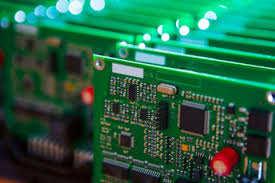Flexible Print Circuit Boards (FPCBs) are changing the way electronic devices are connected With the help of robust, pliable materials, FPCBs have the edge on the customary stiff PCBs, principally as far as current applications... SPACE AND WEIGHT CONSIDERED, WHICH CAN SERIOUSLY AFFECT UPCOMING IDEAS.
Design opportunities are unlocked by the flexibility
The key property of FPCBs is their foldability - the ability to bend, twist, and fold to make connections that rigid PCBs simply cannot. Particularly for complex assemblies such as wearables, mobile devices, and medical equipment, this flexibility is a huge advantage. Folding FPCBs into the smallest spaces and to non-linear shapes, the need for connectors and harnesses can be eliminated, which could save more up to 60% of space and weight over rigid PCB solutions.
More Reliable During Anxiety
FPCBs are excellent for environments that include movement or bending. Flexible Printed Circuit Board (FPCB)-Unlike rigid PCBs that stand to break or crack upon repeated movement, the FPCBs can withstand thousands, if not hundreds of thousands of flex cycles without failure. Its strength is vital for foldable-smartphones, or moving parts in a camera or an automotive electronics.
Improved Heat Dissipation
FPCBs are slim, but even then, they can efficiently disperse heat. FPCBs utilize materials like polyimide or polyester that provide enhanced thermal stability, and could work within the temperatures between -200°C to +400°C, enabling them to transfer heat conveniently, prolonging the lifespan of the electronic elements for an optimal functionality.

Less expensive assembly less time spent on the factory floor
Iysenbel FPCBs simplify this process, saving time and cost. Manufacturers can eliminate multiple rigid boards and connectors in a design by combing multiple FPCBs into one design. This integration can save 75% of assembly time, drastically accelerating production cycles and reducing labor costs.
Lightweight and Space-Saving
Because FPCBs are so thin and light, they are frequently used in modern electronics where designs are aiming for smaller and lighter circuits. They usually weigh at least 70% less than rigid PCBs, and can be far smaller, a near-essential for aerospace and consumer electronics where spare grams are invaluable.
Increased System Durability
FPCB help improve the durability of the system by making interconnect points less in number; hence, it is a more effect choice in comparison to other options. For the entire system, the reduced number of connections and solder joints decreases the number of potential points of failure, resulting in a more robust and reliable system. This strength can be quite advantageous for high-vibration settings such as automotive or industrial machinery.
FPCBs remain one of the most important determinants in the expansion of electronic design, providing unmatched flexibility, strength and efficiency. From your everyday consumer gadget to critical medical equipment, FPCBs offer ink many benefits that make it an ideal choice for designers wanting to push limits further on what can be achieved in electronics. The trend towards flexible, durable electronics reflects the rising significance of flex PCB technology in an increasingly advanced, high-tech world.